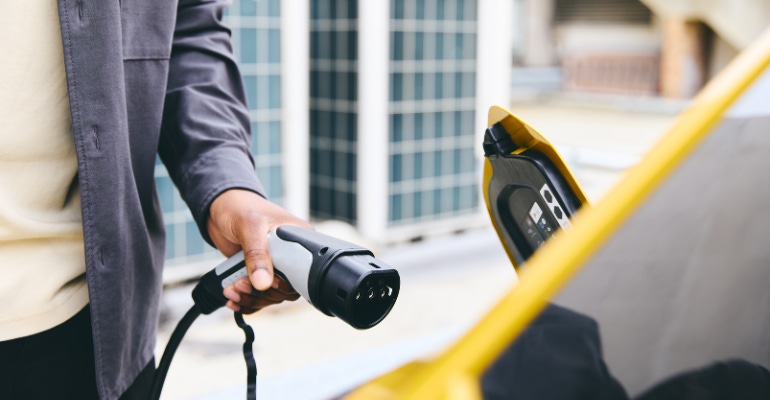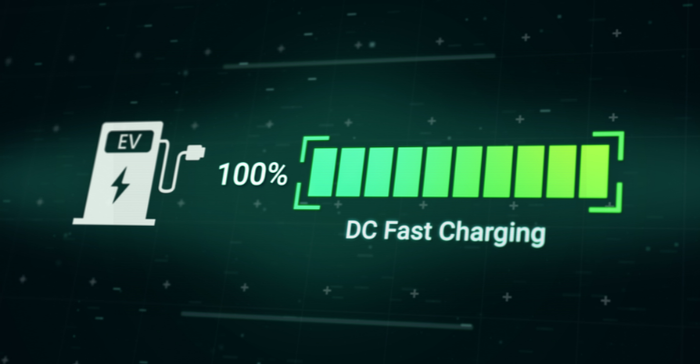Are Electric Vehicles Safe for Pacemaker Patients?
A new study investigates the risk of electromagnetic interference with pacemakers and defibrillators when using high power electric vehicle chargers.
April 19, 2023

With the increasing popularity of electric vehicles, you might be wondering if it's safe to drive or charge one of these bad boys if you have a pacemaker or defibrillator.
According to a new study, presented this week at the European Heart Rhythm Association (EHRA) in Barcelona, Spain, the answer is yes – so long as you don't place the charging cable directly over your cardiac device, or stay near the charging cable for extended lengths of time. The study was also published in EP Europace, a journal of the European Society of Cardiology, which hosts the EHRA scientific congress.
“The new high power charging stations for electric cars have the potential to create strong electromagnetic fields and cause electromagnetic interference in pacemakers and defibrillators, leading them to malfunction,” said study author Carsten Lennerz, MD, of the German Heart Centre Munich. “We previously investigated the risk of electromagnetic interference with cardiac devices while driving electric cars and found that the largest electromagnetic field was located along the charging cable. This was the first study to examine the risk of electromagnetic interference in patients with cardiac implantable electronic devices (CIEDs) while using high power chargers.”
Pacemakers and defibrillators are used to treat patients with heart rhythm disorders or heart failure. It is estimated that 1 million to 1.4 million pacemakers will be implanted globally in 2023. Given that the average life expectancy with a pacemaker is 8.5 years, the number of people with a pacemaker worldwide is likely to be in the region of 8 million to 12 million, the researchers noted. In addition, roughly 150,000 to 200,000 patients across the world receive an implantable cardioverter defibrillator (ICD) each year, they said.
High power chargers delivering up to 350 kW were developed to shorten charging time for electric vehicles. The new chargers use DC (direct current) which allows for higher power delivery, while older or home chargers use AC (alternating current). With a greater charging current there may be a stronger magnetic field and a higher risk of electromagnetic interference which could cause a pacemaker to stop pacing or a defibrillator to deliver painful shock therapy inappropriately (due to falsely detecting a rapid arrhythmia). There are no official recommendations on the use of high power chargers for patients with pacemakers or defibrillators who drive electric vehicles.

The study included 130 patients with a pacemaker or defibrillator. The average age was 59 years and 21% were women. Four publicly available, fully electric vehicles capable of high power charging were used during the study. However, these cars cannot take the maximal charge of 350 kW, the researchers noted. Because it is highly likely that future electric vehicles will take the highest charge, the researchers also used a test vehicle which could draw 350 kW from the high power chargers.
Participants had their cardiac devices programmed to optimize detection of electromagnetic interference. They were then asked to plug in and charge each car with the charging cable placed directly over their cardiac device to maximise the likelihood of electromagnetic interference. Patients were monitored for any malfunction of their cardiac device such as a failure to deliver pacing therapy or inappropriately sensing abnormally fast heart rhythms. The cardiac devices were also checked for any change in their programming or damage after charging the cars.
In total, 561 charges were performed during which the researchers did not observe any adverse events caused by electromagnetic interference. Specifically, there was no inhibition of pacing in pacemakers nor inappropriate detection of rapid arrhythmias that might lead to painful shock therapy for patients with defibrillators, the researchers reported.
“This study was designed as a worst-case scenario to maximise the chance of electromagnetic interference," Lennerz said. "Despite this, we found no clinically relevant electromagnetic interference and no device malfunction during the use of high power chargers, suggesting that no restrictions should be placed on their use for patients with cardiac devices.”
He said the study focused on high power charging technology rather than home chargers for electric vehicles.
“Home chargers use a smaller current but AC generates a different magnetic field than DC,” he said. “Home charging is likely safe with sensible precautions, such as not staying next to the charging cable for extended periods of time.”
Patients with implantable heart devices can be reassured that charging electric vehicles with high power chargers is safe, Lennerz said.
"The risk of malfunction of pacemakers and defibrillators is extremely low in this situation. Sitting inside the car or standing next to the charging cable or charger is also safe," he said. "However, we would recommend not placing the charging cable directly over the cardiac device to maintain distance from the charging elements.”
About the Author(s)
You May Also Like



.png?width=300&auto=webp&quality=80&disable=upscale)
